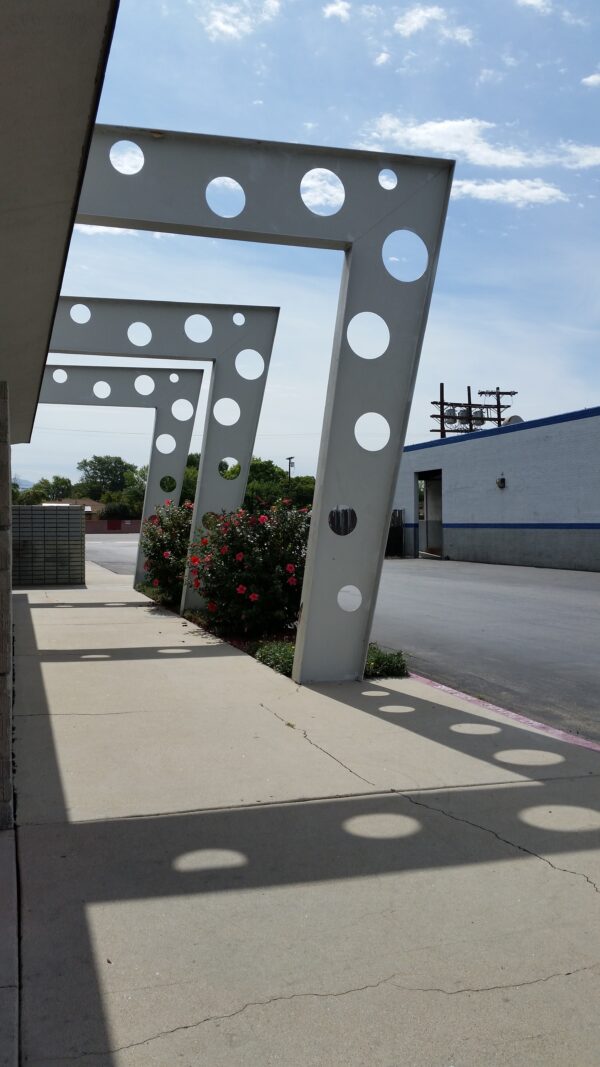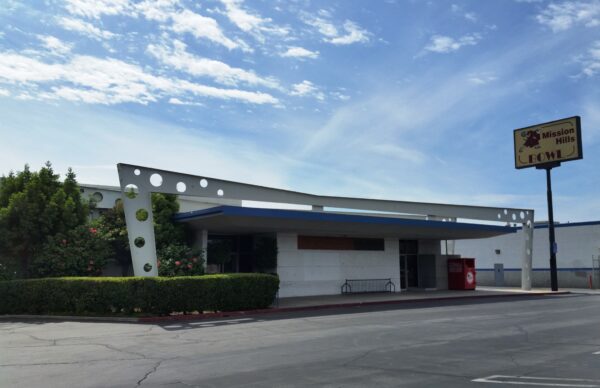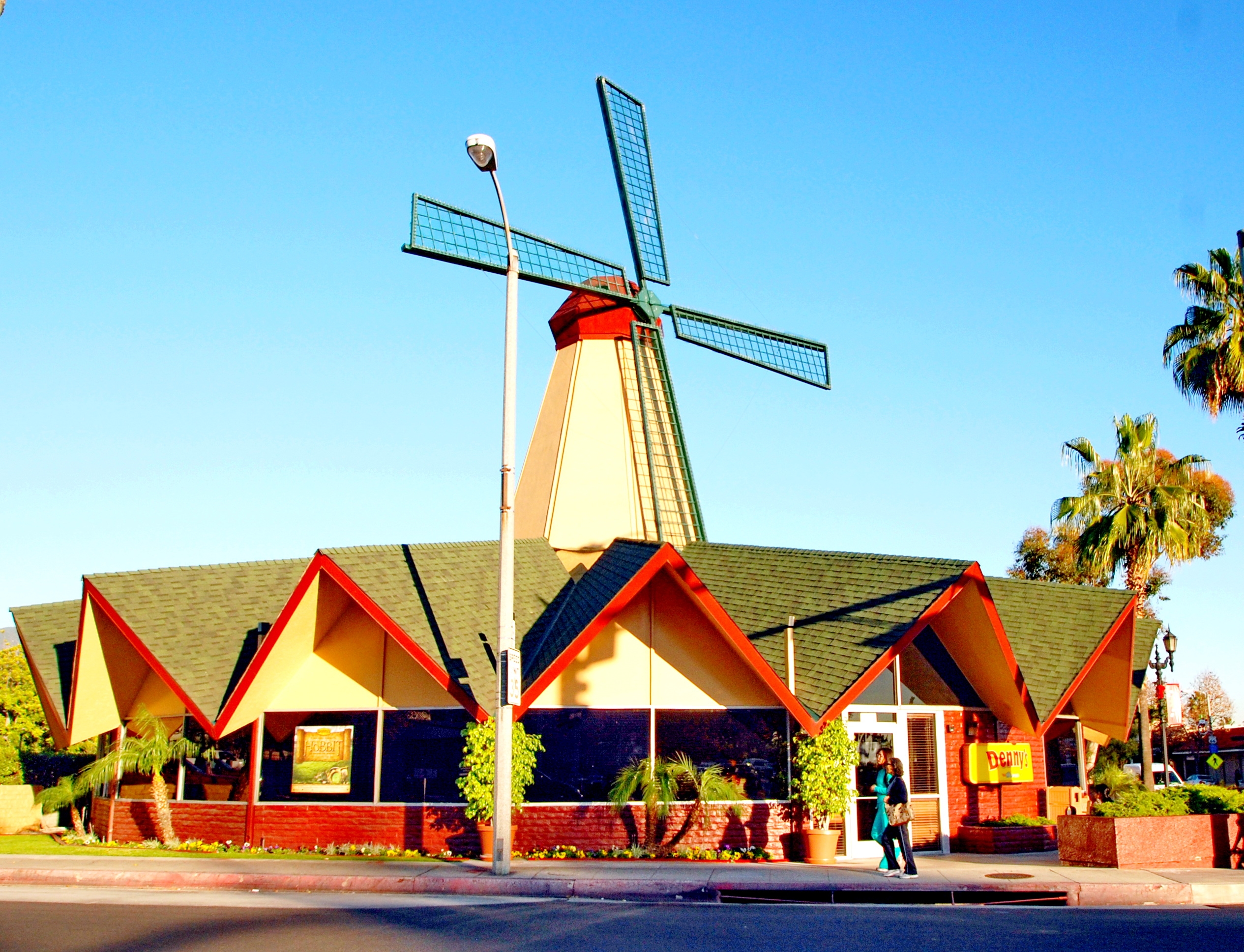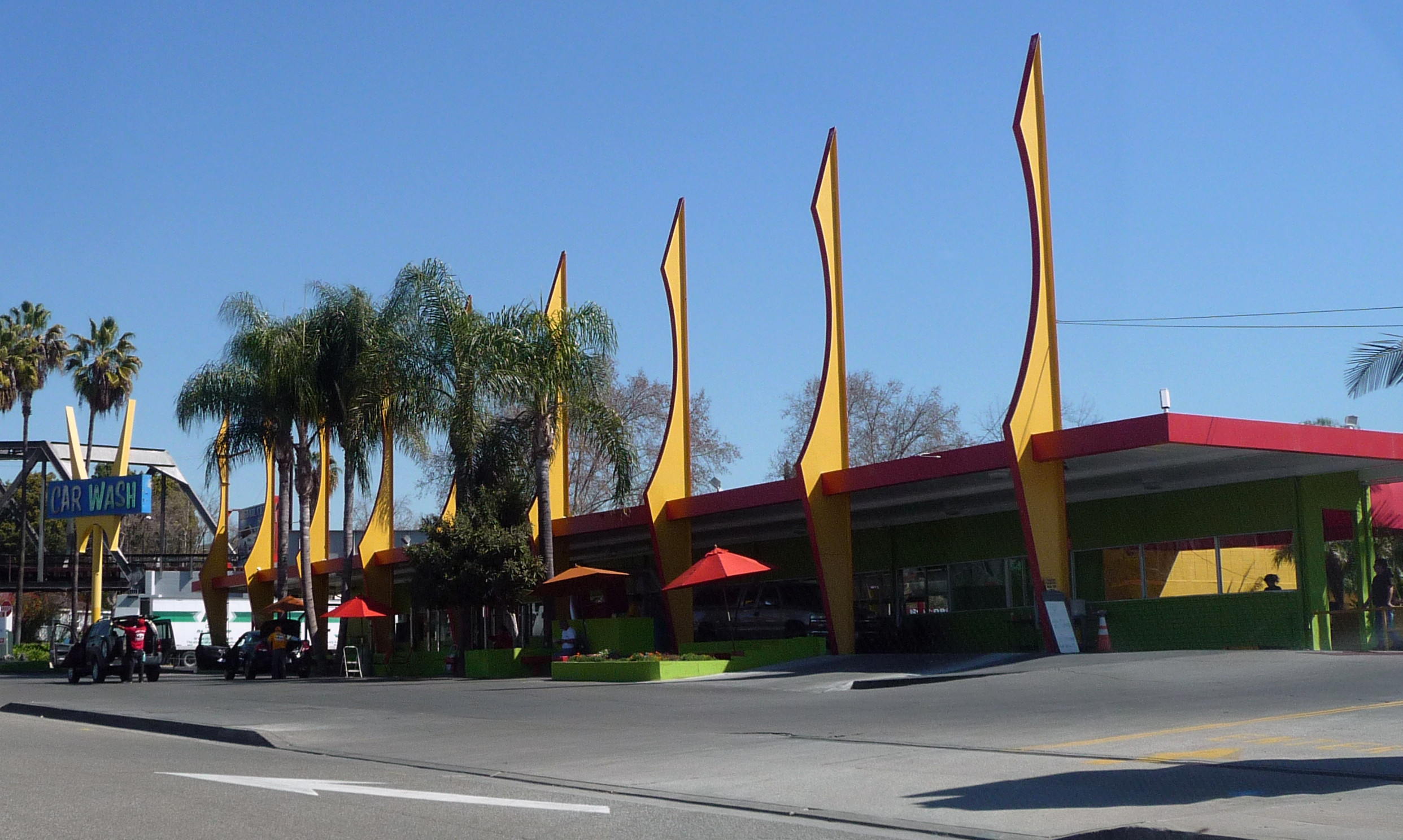
Place
Mission Hills Bowl / Citrus Lanes
Designed by Martin Stern, Jr., a proponent of Googie style architecture, Mission Hills Bowl is a rare surviving example of a postwar bowling alley.
Saved
The Mission Hills Bowl is a successful example of adaptive reuse as it was converted into a retail space during the site’s redevelopment.


Place Details
Address
Architect
Neighborhood
Year
Property Type
Government Officials
Community

Photo by Adrian Scott Fine/L.A. Conservancy
Overview
Located in the San Fernando Valley, the 1957 Mission Hills Bowl embodies the space-age optimism and imagination of postwar Los Angeles. Architect Martin Stern, Jr., a contemporary of “Googie” pioneer John Lautner, was known for his futuristic designs, which celebrated Southern California’s modernity and car culture through expressive geometries and bold signage.
Mission Hills Bowl is one of several Google style bowling alleys in Southern California, including Corbin Bowl in Tarzana, Covina Bowl in Covina, and Friendly Hills Lanes in Whittier. As recreational and social centers in their communities, these buildings featured exaggerated designs intended to bring modernism to the masses.
About This Place
About This Place
Martin Stern, Jr. was celebrated for his contributions to Googie architecture in the West. His most famous projects included additions to the Sahara Hotel (1953) and Sands Hotel (1964) in Las Vegas, as well as Ship’s Coffee House (1958) in Los Angeles.
The building is significant for its modern glass and steel design. Most distinctive are its exposed steel beams with circular cutouts, which burst from the side of the brick building in a manner reminiscent of a rocket.
Though Stern was best known for revolutionizing the Vegas Strip, his design for Mission Hills Bowl reveals the excitement and technological advancements of the postwar era in Los Angeles.
In 2014, Mission Hills Bowl was identified as eligible for listing in the National Register of Historic Places, the California Register of Historical Resources, and as a Los Angeles Historic-Cultural Monument through SurveyLA, the City of Los Angeles’ comprehensive citywide survey of historic resources. The property was determined significant for its distinctive Googie architecture and for its role in the development of the Valley’s commercial and recreational landscape.
Developer Primestor purchased the Mission Hills Plaza, home to the Martin Stern, Jr.-designed Mission Hills Bowl, in 2007 with the goal of redeveloping this commercial center in the northern San Fernando Valley. The bowling alley, which had operated under its most recent owner since 1974, closed its doors in May 2015.
In December 2015, the City published a proposed Mitigated Negative Declaration (MND) for the revised project, which includes plans to rehabilitate and adaptively reuse the Mission Hills Bowl building. The Conservancy submitted comments on the MND in support of the project and plan for the historic building.
As a condition of approval, the project applicant will nominate the Mission Hills Bowl building for listing as a Historic-Cultural Monument (HCM).
The City Planning Commission voted unanimously to recommend approval on March 10, 2016. City Council approved the project on June 14, 2016.
On June 24, 2022, City Council officially designated the Mission Hills Bowl building a City of Los Angeles Historic Cultural Monument. This follows recommendations from the Cultural Heritage Commission on December 16, 2021 and the Planning and Land Use Management (PLUM) Committe on June 16, 2022.
Today, the Mission Hills Bowl is a successful example of adaptive reuse as it was converted into a retail space during the site’s redevelopment.
Our Position
The Conservancy’s involvement with Mission Hills Bowl dates to early 2009, when participants in our Student Advocates after-school program at the John F. Kennedy High School Architecture and Digital Arts Magnet in Granada Hills conducted research on the property.
The Conservancy submitted comments on the proposed Mitigated Negative Declaration (MND) in January 2016, offering our support for the Olivo Shopping Center project and its plans for the Mission Hills Bowl building.
We appreciate the applicant’s willingness to rehabilitate and revitalize the historic building as part of a sensitive new development. Though early plans called for demolition, we commend their willingness to explore preservation alternatives.
While certain modifications were made to the Mission Hills Bowl building in order to adapt it for retail use, we believe that the project meets the Secretary of the Interior’s Standards for Rehabilitation and that the building will maintain its eligibility as an historic resource.
As an additional layer of protection, we strongly supported the condition to nominate the building for local Historic-Cultural Monument designation.






